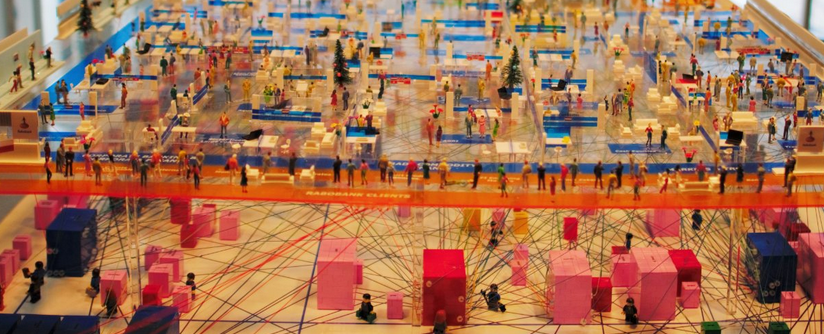Rabobank builds 3D model of its own IT landscape
Mapping the IT landscape of a large organisation is probably not an easy task and Rabobank is attempting to resolve this via the construction of a 3D model of its own structure and supporting IT systems.
In a LinkedIn post by Hans Tesselaar, executive director of the Banking Industry Architecture Network (BIAN), a not-for-profit fintech industry body, he explains how the bank’s future model closely resembles BIAN’s business capability model. According to Tesselaar, this helps the bank to visualise the desired transactions and he reckons other organisations are “lining up to learn from the 3D model too”.
Tesselaar says this is the “first time an organisation has invested in visualising its own IT landscape in this way”; and “everyone who sees the model immediately recognises a lot of things. It provides great insight in the problems and issues of IT, in a way that a board of directors can also see that IT-related problems cannot be resolved in a day or so”.
Rabobank WRR (wholesale, rural and retail) has built two models; one of the current situation, and one of the future situation.
Anne-Marie Breuker, business architect with Rabobank WRR and trainer of the 3D model, says: “We wanted to create something that would have a wow-factor within the bank. It had to appeal to the entire organisation … preferably visually, and permanently.”
It took three months to build the model – including gathering all the information from all corners of the bank.
Breuker adds: “We do many of the same things in different ways, which makes it complex. Rabobank is also becoming more global, and customers find that they are served differently in Singapore than in Utrecht. We want to change that.”
In addition to globalisation, the changing way in which regulators work is also a driving force for Rabobank. In the past, banking regulators used to work with reports, but Tesselaar believes they now would like to look at banking data. Because there are so many different systems within Rabobank, a separate team would be required to link all this data. With the implementation of the new model, the bank wants to prevent that. The third reason for the transition is cost savings.
Tesselaar makes it clear that during construction, Rabobank was not familiar with BIAN’s model, but now both parties have agreed to compare and adapt these two models. The bank has also built the 3D model in virtual reality and there are plans to build a virtual model using hologram techniques.
Because most companies find themselves in a similar situation, Tesselaar says they can learn a lot from the bank’s 3D model.
“Everyone who sees it wants a copy to show to their boss,” he explains. “It has a wow-factor, it literally allows you to look into the future.”
Banking Technology Awards 2017 are now open for entry!
Know any innovative products, inspirational projects, skilled teams or visionary leaders that deserve a special recognition this year? Nominate them for a Banking Technology Award!
Deadline for submitting the nominations is 25 August 2017.











































Need to understand more about Rabo’s IT and business landscape